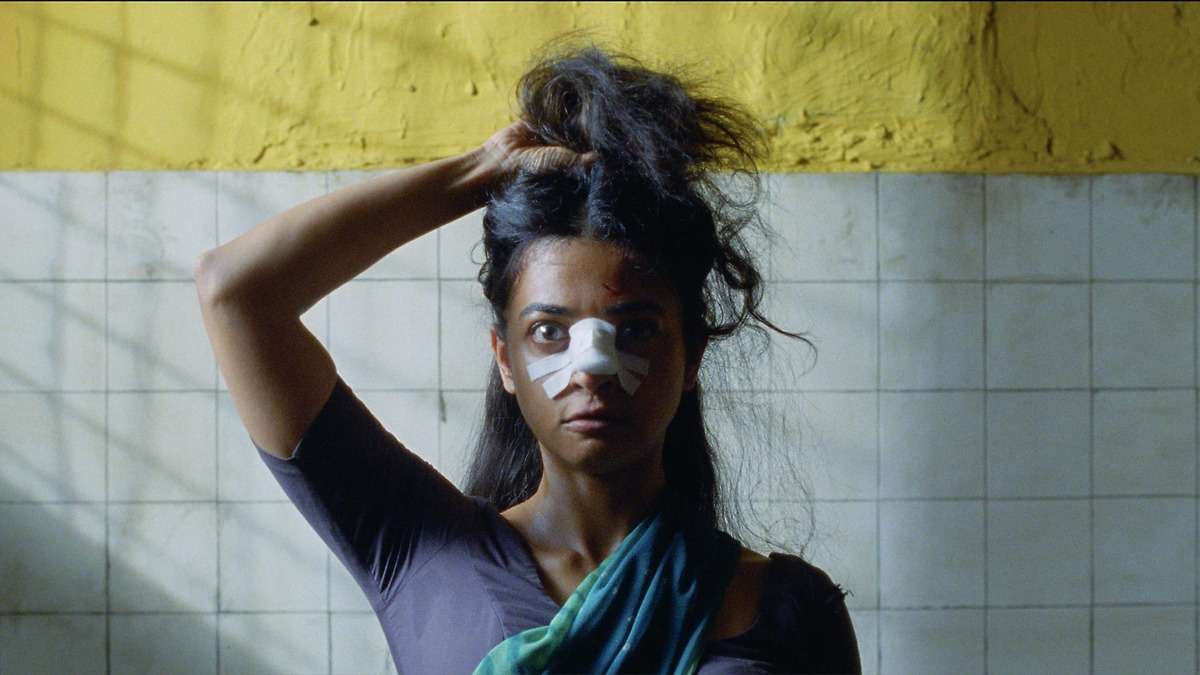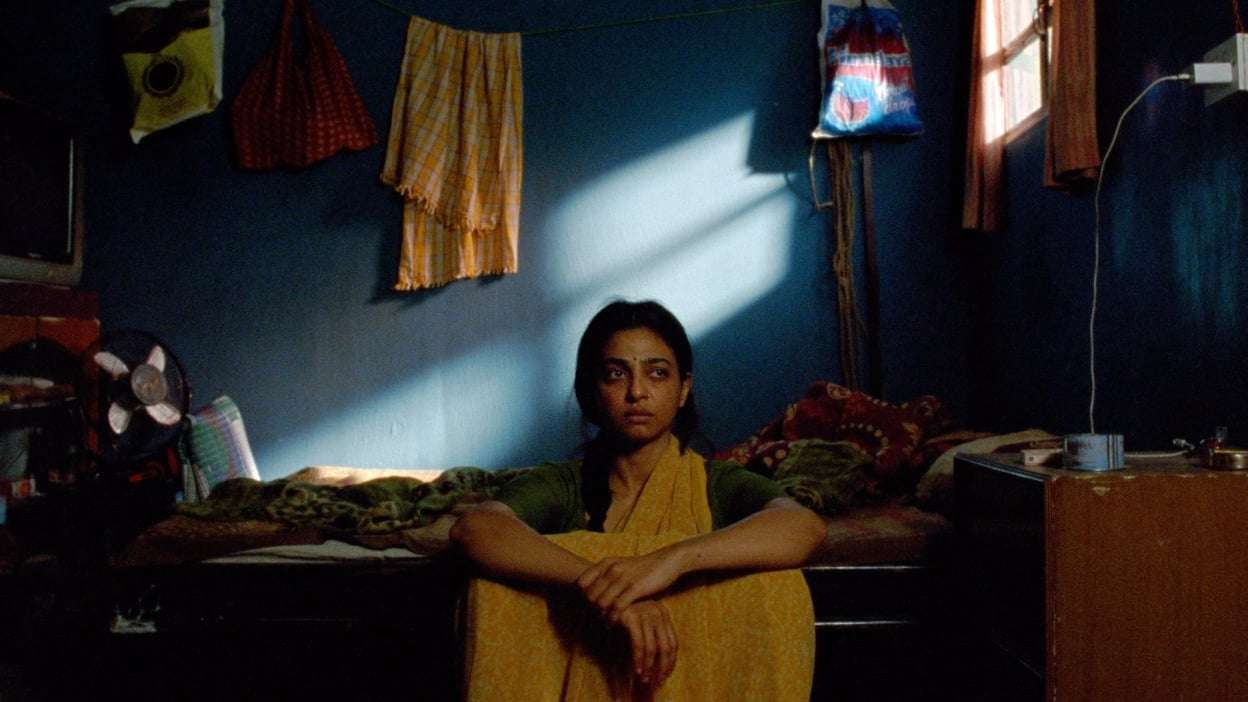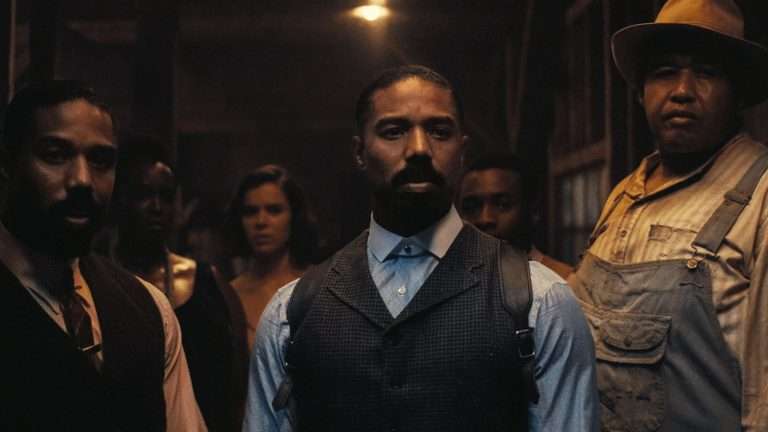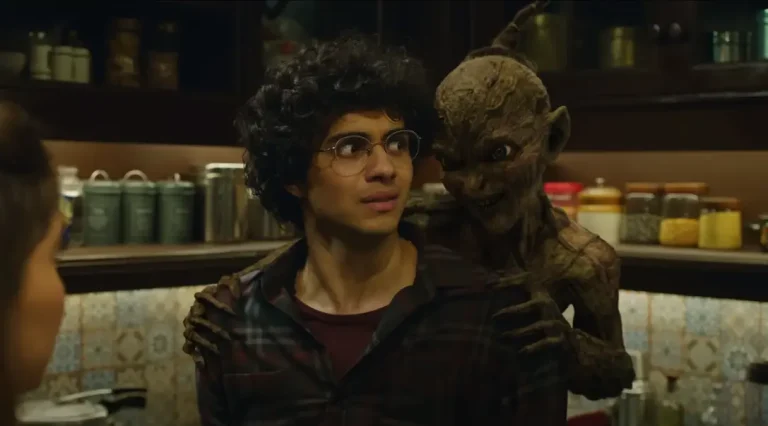“Sister Midnight” (2024) is a sharp and darkly humorous satire that explores the entrapment of women within the institution of arranged marriages in India, carried by Radhika Apte with her insanely brilliant performance. The film follows Uma (Apte), a boisterous young woman who arrives in a new city after her arranged marriage, stepping into unfamiliar ground filled with a judgmental environment. The opening sequence, with Uma on a train at night, haunted by a frightening dream waiting for her, sets the tone for her journey—one filled with isolation and disillusionment. By the film’s end, she departs again, but this time in daylight, carrying all her delusions on a different train.
Uma struggles to connect with her husband, Gopal, who is indifferent to her presence. He prioritizes work and drinking, showing no interest in intimacy. Uma, eager to forge a connection, even signals her willingness to start their marital life, but Gopal simply shakes her hand and goes to sleep beside her, avoiding any romance, or intimacy. Their awkward dynamic leaves both questioning why they married in the first place.
The neighbours take notice, their scrutiny further suffocating Uma. Yet, she refuses to succumb to their expectations, subtly pushing back through gestures and defiance. At some point, Uma finds a new job, a cleaning job amid her messy new life, out of her boredom, loneliness, and failure to connect with her husband. She gains some friends along the way, including a neighbour, Sheetal, played by Chhaya Kadam. Though new connections ease some brief moments in Uma’s repetitive lonely life, they do not help solve her marital issues entirely. This leads to the creation of new habits in Uma—a birth of a serial killer—”Sister Midnight” is born at midnight.

The image of Uma wielding a broomstick carries a dual meaning—she is both a goddess and a troubled figure—making it easy for people in this film to call her a monster or a beast. The film cleverly critiques societal perceptions, particularly the way Indian culture often vilifies women who deviate from the role of a dutiful wife. The neighbourhood’s belief that Uma is a monster serves as a metaphor for the rigid expectations placed upon women who don’t follow the customs tailored by society.
Much of the film unfolds episodically, chronicling Uma’s attempts to navigate her new life. The end of the second act, however, stretches a bit long, leading to feelings of fatigue among the audience. But this film didn’t just plant a couple of seeds of witty and quirky humour in the beginning; it cultivated a plantation of humour throughout the film, keeping everyone engaged with the film. Moreover, without Radhika, the audiences’ disconnect with the director’s vision would have been huge.
What starts as a seemingly conventional marital comedic drama takes an unexpected turn in the final act, defying expectations and introducing new subgenres that reinvigorate the narrative. Through this different turn and new approach, creativity is renewed but it also slightly dilutes the plot. One could sense before the last act that this could end on a positive note—that Uma finally got along with her husband, a happy conclusion to a realistic issue that still prevails hugely in Indian society. Maybe that’s why the introduction of new genres?
“Sister Midnight” is a bold, satirical exploration of marriage, societal expectations, and personal liberation. Though not without its flaws, it remains a thought-provoking and entertaining ride that challenges conventional storytelling and offers a fresh perspective on a woman’s quest for autonomy. Uma’s erratic behaviour and the film’s sudden genre shifts create a sense of disorientation, mirroring the character’s unravelling mind. While this might leave audiences bewildered, it also adds to the film’s intrigue and unpredictability.

The film is filled with a lot of small moments that tell stories of their own. One such moment is when Uma decides to take a train and run off for a while. As she goes through the railway station, she tries to see where the train ends, but the necessary travel route is covered with unnecessary advertisements. She has to tear them off to find out where the train goes. A few minutes later, she sits on a stone platform, finally experiencing a brief moment of relief while watching the sea. However, the moment lasts only a few seconds before Uma notices that people come to this spot to cry out loud. She can’t stand them, as she wants a peaceful moment. So, she runs away.
Radhika delivers a standout performance, infusing Uma with a mix of vulnerability, humour, and unsettling unpredictability. Even the smallest of her movements—down to her fingers and toes—elicits laughter. Director Karan Kandhari’s sense of humour is undeniably brilliant, though humour is always subjective. However, the precision with which it is crafted is remarkable. The score, though seldom present, elevates key moments, serving as an additional pillar in an already solid structure.
The 107-minute feature should have expanded its runtime a bit to explain all the symbolisms, the witty humour, and also to appreciate the brilliant cinematography and the performance. May not be inspirational, Uma is easily a new-age rebellious icon—with some delusions.








![Maze Runner: The Scorch Trials (2015) Movie Review: Not as W[i]CK[e]D as it seems!](https://79468c92.delivery.rocketcdn.me/wp-content/uploads/2015/09/Hypable-First-look-at-The-Maze-Runner-sequel-The-Scorch-Trials-888x456.jpg)
